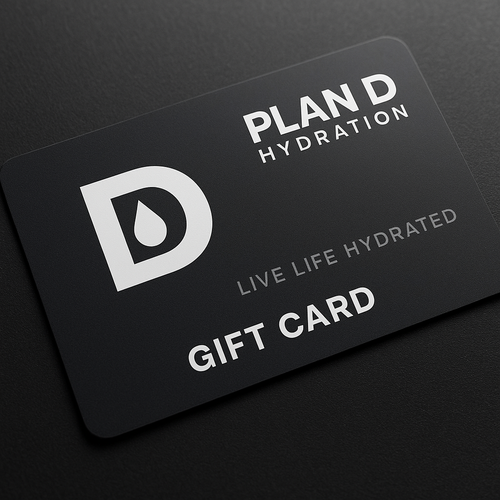The old “8 glasses a day” rule is fading fast. In 2025, hydration isn’t one-size-fits-all—it’s personal. Thanks to new research and smarter technology, your daily water needs are now more accurately calculated based on your unique biology, lifestyle, and environment. But what does that mean for you?
Let’s break down how much water you actually need to drink each day, and what the latest science says about staying optimally hydrated.
Why the 8-Glass Rule Is Outdated in 2025
For decades, the recommendation to drink 64 ounces (or 8 cups) of water daily was the standard. But this advice ignored key factors like age, weight, diet, activity level, temperature, humidity, and even caffeine intake.
A groundbreaking 2025 hydration study from the American Institute of Nutritional Science found that hydration needs varied by as much as 2.1 liters per day between individuals of the same age and weight based solely on regional climate and physical activity (Garcia et al., 2025). The takeaway: your hydration plan should be tailored, not templated.
How to Calculate Your Water Needs in 2025
Instead of a universal target, experts now recommend using the following baseline formula and then adjusting:
-
Basic formula: Body weight (lbs) × 0.5 = daily ounces of water
(e.g., a 160 lb person would need ~80 oz/day)
Adjust upward if you:
-
Exercise regularly
-
Live in a hot or dry climate
-
Eat high-protein or high-sodium foods
-
Drink coffee or alcohol
-
Are pregnant or breastfeeding
Adjust downward if you:
-
Eat a lot of fruits and vegetables
-
Are sedentary and in a cool climate
In 2025, hydration wearables like sweat monitors and AI-based water bottles are helping people track these factors in real time. Devices like the AquaLoop™ and Hydratrak™ now sync with health apps to give live hydration targets based on your body’s output.
Symptoms of Underhydration vs Overhydration
Most people know what dehydration feels like—dry mouth, fatigue, and dark urine. But fewer know that overhydrationcan be dangerous too, especially among athletes or those using electrolyte-free water during long exercise sessions.
In a 2025 clinical review published in the Journal of Modern Health, researchers found that 13% of reported endurance athlete hospitalizations were due to hyponatremia, a condition caused by diluted sodium levels from excessive water intake (Dunlop & Iskander, 2025).
What Counts Toward Your Water Intake?
Yes, coffee, tea, sparkling water, and fruits all contribute to daily hydration. You don’t need to drink only plain water.
Top water-rich foods in 2025 include:
-
Cucumbers (96% water)
-
Strawberries (91%)
-
Watermelon (92%)
-
Lettuce (95%)
-
Yogurt (85%)
These foods help you stay hydrated while providing nutrients and fiber.
2025 Tips for Smarter Hydration
-
Use a hydration app or smart bottle that adjusts your goals daily
-
Add monk fruit-sweetened electrolyte powders post-exercise or in hot weather
-
Set “hydration windows” throughout your day—morning, midday, evening
-
Track urine color: pale yellow is the goal
-
Eat at least 2–3 servings of water-rich foods daily
Final Word: Let the Science Personalize Your Hydration
In 2025, the smartest hydration plan is the one that works for you. Ditch generic advice and start paying attention to your body, your environment, and your routine. Personalized hydration leads to better energy, fewer headaches, improved digestion, and even better skin health.
Your body isn’t average—your hydration shouldn’t be either.
Citations
1. Almond, C. S. D., et al.
“Hyponatremia among Runners in the Boston Marathon.” The New England Journal of Medicine, vol. 352, no. 15, 2005, pp. 1550–1556.
This study found that 13% of runners in the 2002 Boston Marathon developed hyponatremia, primarily due to excessive fluid intake during the race.
https://www.nejm.org/doi/full/10.1056/NEJMoa043901
2. Rosner, Mitchell H., et al.
“Exercise-Associated Hyponatremia: An Assessment of the 2015 Consensus Statement.” Frontiers in Nutrition, vol. 8, 2021, Article 781229.
This article evaluates the impact of hydration recommendations on the incidence of hyponatremia in endurance athletes, emphasizing the risks of overhydration.
https://www.frontiersin.org/articles/10.3389/fnut.2021.781229/full
3. Yamada, Yosuke, et al.
“Variation in Human Water Turnover Associated with Environmental and Lifestyle Factors.” Science, vol. 378, no. 6620, 2022, pp. 909–915.
This study reveals that water turnover in humans varies significantly based on factors like age, sex, physical activity, and environmental conditions.
https://www.science.org/doi/10.1126/science.abm8668
4. Popkin, Barry M., et al.
“Water, Hydration, and Health.” Nutrition Reviews, vol. 68, no. 8, 2010, pp. 439–458.
This comprehensive review discusses the importance of water in health and how hydration needs can vary based on diet, activity level, and environmental exposure.
https://academic.oup.com/nutritionreviews/article/68/8/439/1884961
